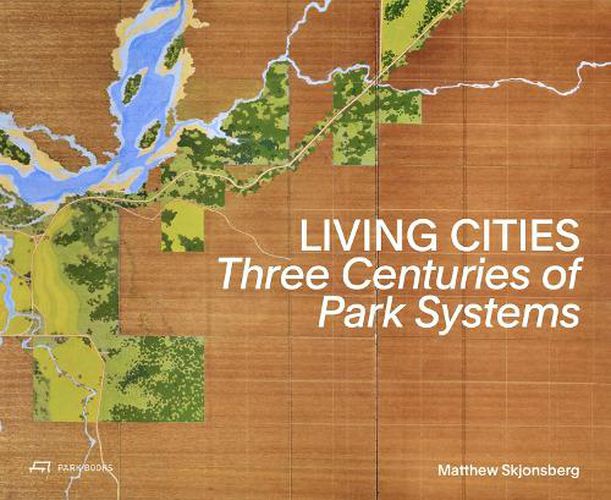Readings Newsletter
Become a Readings Member to make your shopping experience even easier.
Sign in or sign up for free!
You’re not far away from qualifying for FREE standard shipping within Australia
You’ve qualified for FREE standard shipping within Australia
The cart is loading…






A celebration of park systems as central to communities around the world. The creation of park systems is a historically proven method to stabilize communities and cultivate healthy ecological habitats in country dwellings as well as in dense urban areas. Park systems ensure clean soil, water, and air for all. Moreover, they offer intergenerational and inclusive recreational opportunities along ecological corridors. Between 1900 and 1950, civic design-a practice in urban and landscape planning explicitly oriented towards the common good-experienced a heyday. Park systems were successfully used as ?green armatures? hosting public facilities such as playgrounds, schools, administrative buildings, hospitals, and gardens. Living Cities offers a chronological survey of civic design based on more than thirty park systems on five continents. The examples range from Johann Wolfgang von Goethe's Park an der Ilm in Weimar (1778) and John Nash's Regent Street in London (1806) to Chicago's park system (1850), Albert Bodmer and Maurice Braillard's plans for Geneva (1936), and Frank Lloyd Wright's Taliesin Valley (1947), as well as to contemporary and future projects in Addis Ababa, Madrid, Medellin, New York, and Seoul. This book demonstrates the ecological and social impact of park systems and highlights the diverse challenges that communities face when implementing such projects. At the same time, it encourages a reevaluation of civic design as an intergenerational practice of urban design. AUTHOR: Matthew Skjonsberg is a lecturer on the MAS in Urban and Territorial Design program at EPFL in Lausanne and the director of Praxis Institute, a Swiss-based trans-disciplinary experimental research initiative. SELLING POINTS: . First book in more than a century on the topic of park systems and civic design, the practice of urban and landscape planning explicitly oriented towards the common good . A chronological survey of civic design, featuring 30 park systems on five continents from three centuries . A re-evaluation of civic design as an intergenerational practice of urban planning in the light of current initiatives . Park systems are highly topical against the backdrop of climate change and the associated ecological and economic challenges 186 colour, 114 b/w illustrations
$9.00 standard shipping within Australia
FREE standard shipping within Australia for orders over $100.00
Express & International shipping calculated at checkout
A celebration of park systems as central to communities around the world. The creation of park systems is a historically proven method to stabilize communities and cultivate healthy ecological habitats in country dwellings as well as in dense urban areas. Park systems ensure clean soil, water, and air for all. Moreover, they offer intergenerational and inclusive recreational opportunities along ecological corridors. Between 1900 and 1950, civic design-a practice in urban and landscape planning explicitly oriented towards the common good-experienced a heyday. Park systems were successfully used as ?green armatures? hosting public facilities such as playgrounds, schools, administrative buildings, hospitals, and gardens. Living Cities offers a chronological survey of civic design based on more than thirty park systems on five continents. The examples range from Johann Wolfgang von Goethe's Park an der Ilm in Weimar (1778) and John Nash's Regent Street in London (1806) to Chicago's park system (1850), Albert Bodmer and Maurice Braillard's plans for Geneva (1936), and Frank Lloyd Wright's Taliesin Valley (1947), as well as to contemporary and future projects in Addis Ababa, Madrid, Medellin, New York, and Seoul. This book demonstrates the ecological and social impact of park systems and highlights the diverse challenges that communities face when implementing such projects. At the same time, it encourages a reevaluation of civic design as an intergenerational practice of urban design. AUTHOR: Matthew Skjonsberg is a lecturer on the MAS in Urban and Territorial Design program at EPFL in Lausanne and the director of Praxis Institute, a Swiss-based trans-disciplinary experimental research initiative. SELLING POINTS: . First book in more than a century on the topic of park systems and civic design, the practice of urban and landscape planning explicitly oriented towards the common good . A chronological survey of civic design, featuring 30 park systems on five continents from three centuries . A re-evaluation of civic design as an intergenerational practice of urban planning in the light of current initiatives . Park systems are highly topical against the backdrop of climate change and the associated ecological and economic challenges 186 colour, 114 b/w illustrations